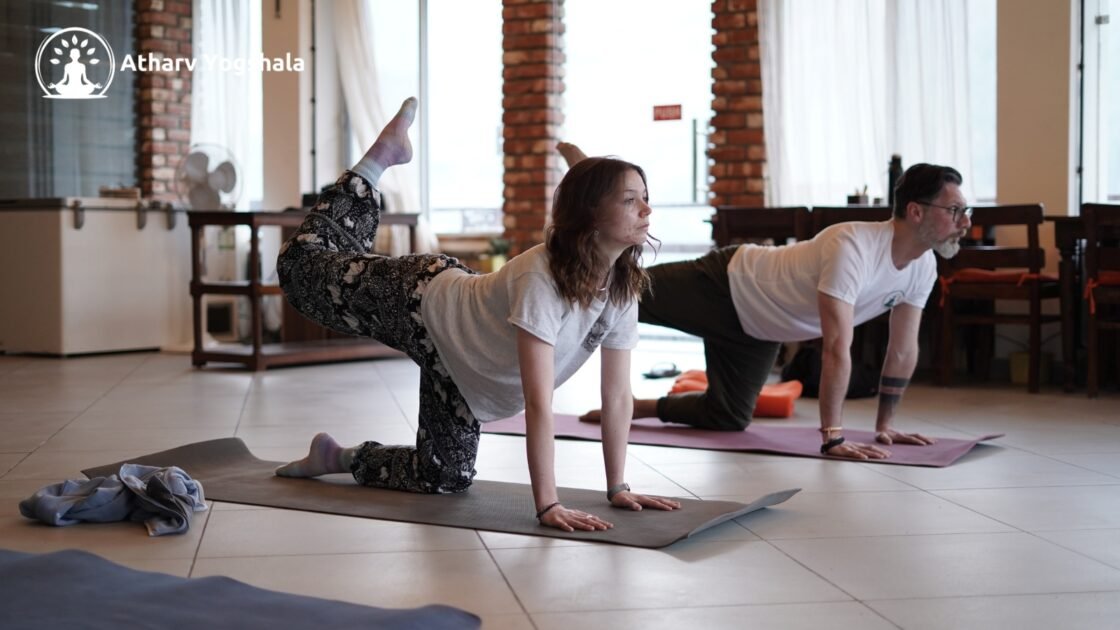
Stress has become a ubiquitous aspect of modern life, affecting millions of people worldwide. The relentless pace of contemporary living, coupled with increasing personal and professional demands, has made stress a significant health concern. Chronic stress can lead to various physical and mental health issues, including heart disease, anxiety, depression, and a weakened immune system. In this context, finding effective strategies to manage and reduce stress is crucial for maintaining overall well-being. One such strategy that has gained considerable attention is yoga. This ancient practice, which originated in India over 5,000 years ago, is now recognized globally for its myriad health benefits, particularly its ability to alleviate stress. This essay explores how yoga can help reduce stress, examining the physiological, psychological, and biochemical mechanisms underlying its efficacy.
The Origins and Philosophy of Yoga
Yoga is more than just physical exercise; it is a comprehensive system for achieving mental and spiritual well-being. The word ‘yoga’ is derived from the Sanskrit root ‘yuj,’ which means ‘to yoke’ or ‘to unite.’ It signifies the union of the body, mind, and spirit. Traditional yoga encompasses various practices, including physical postures (asanas), breath control (pranayama), meditation (dhyana), and ethical disciplines (yamas and niyamas).
The holistic nature of yoga makes it particularly effective for stress reduction. Unlike conventional exercises that primarily focus on physical fitness, yoga integrates physical, mental, and spiritual dimensions, promoting a sense of inner peace and balance. This multidimensional approach is crucial in addressing the complex and multifaceted nature of stress.
The Physiological Mechanisms of Stress Reduction through Yoga
- Activation of the Parasympathetic Nervous System
One of the primary physiological mechanisms through which yoga reduces stress is by activating the parasympathetic nervous system (PNS). The PNS is part of the autonomic nervous system and is responsible for promoting relaxation and recovery. When activated, it counteracts the ‘fight or flight’ response induced by the sympathetic nervous system (SNS), which is often triggered during stressful situations.
Yoga practices, particularly deep breathing exercises and specific asanas, stimulate the vagus nerve, a key component of the PNS. This stimulation results in a decrease in heart rate, blood pressure, and cortisol levels, the primary stress hormone. For example, a study published in the Journal of Alternative and Complementary Medicine found that participants who practiced yoga regularly had significantly lower cortisol levels compared to non-practitioners.
2. Improvement in Cardiovascular Health
Chronic stress is a known risk factor for cardiovascular diseases. Yoga has been shown to improve cardiovascular health by reducing blood pressure, improving heart rate variability, and enhancing endothelial function. These benefits are primarily attributed to the stress-reducing effects of yoga, which mitigate the adverse impact of chronic stress on the cardiovascular system.
For instance, research published in the European Journal of Preventive Cardiology demonstrated that individuals who engaged in yoga experienced significant reductions in blood pressure and heart rate, along with improved lipid profiles. These findings suggest that yoga not only reduces stress but also enhances cardiovascular health, further contributing to overall well-being.
3. Enhanced Respiratory Function
Breath control, or pranayama, is a central component of yoga practice. Pranayama techniques, such as deep diaphragmatic breathing and alternate nostril breathing, have been shown to enhance respiratory function and reduce stress. Deep breathing activates the PNS, leading to a state of relaxation. Additionally, improved respiratory function increases oxygenation of the blood, promoting better brain function and mental clarity.
Studies have demonstrated that regular practice of pranayama can lead to significant reductions in perceived stress levels. For example, a study published in the International Journal of Yoga found that participants who practiced pranayama regularly reported lower levels of stress and anxiety compared to those who did not engage in such practices.
The Psychological Mechanisms of Stress Reduction through Yoga
- Mindfulness and Present Moment Awareness
Mindfulness, the practice of being fully present in the moment, is a core element of yoga. Through mindfulness, individuals learn to focus their attention on the present, rather than ruminating about the past or worrying about the future. This shift in focus can significantly reduce stress, as it helps individuals break free from negative thought patterns that contribute to anxiety and stress.
Yoga encourages mindfulness through its emphasis on controlled movements, breath awareness, and meditation. For instance, during asana practice, individuals are encouraged to pay close attention to their body’s alignment, sensations, and breath. This mindfulness practice can carry over into daily life, helping individuals manage stress more effectively.
Research supports the efficacy of mindfulness in reducing stress. A study published in the Journal of Clinical Psychology found that individuals who practiced mindfulness-based stress reduction (MBSR) techniques, which include yoga and meditation, reported significant reductions in perceived stress and improvements in overall well-being.
2. Cognitive Restructuring
Cognitive restructuring involves changing negative thought patterns into more positive and realistic ones. Yoga can facilitate cognitive restructuring by promoting self-awareness and self-reflection. Through regular practice, individuals become more aware of their thoughts and emotions, allowing them to identify and challenge negative thought patterns that contribute to stress.
Meditation and relaxation techniques in yoga play a crucial role in cognitive restructuring. These practices help individuals develop a non-judgmental attitude towards their thoughts and emotions, reducing the impact of stressors on their mental health. For example, a study published in the Journal of Cognitive Psychotherapy found that individuals who practiced yoga and meditation regularly exhibited improved cognitive flexibility and reduced symptoms of anxiety and depression.
3. Emotional Regulation
Emotional regulation refers to the ability to manage and respond to emotional experiences in a healthy way. Stress often leads to emotional dysregulation, resulting in heightened anxiety, irritability, and mood swings. Yoga helps improve emotional regulation by promoting a sense of calm and balance.
Practices such as yoga nidra (yogic sleep) and guided meditation are particularly effective in enhancing emotional regulation. Yoga nidra, a state of deep relaxation, allows individuals to access their subconscious mind and release deeply held emotions and tensions. This process can lead to significant reductions in stress and improvements in emotional well-being.
A study published in the Journal of Behavioral Medicine found that individuals who practiced yoga nidra regularly experienced significant reductions in stress and improvements in emotional regulation. These findings highlight the potential of yoga to enhance emotional resilience and overall psychological health.
The Biochemical Mechanisms of Stress Reduction through Yoga
- Reduction in Cortisol Levels
Cortisol, often referred to as the ‘stress hormone,’ plays a crucial role in the body’s response to stress. Elevated cortisol levels over prolonged periods can lead to various health issues, including weakened immune function, weight gain, and increased risk of chronic diseases. Yoga has been shown to reduce cortisol levels, thereby mitigating the adverse effects of chronic stress.
Research published in the Journal of Alternative and Complementary Medicine demonstrated that participants who engaged in regular yoga practice had significantly lower cortisol levels compared to non-practitioners. These findings suggest that yoga can help regulate the body’s stress response, promoting a sense of calm and well-being.
2. Increase in GABA Levels
Gamma-aminobutyric acid (GABA) is a neurotransmitter that plays a key role in regulating mood and anxiety. Low levels of GABA are associated with anxiety disorders and depression. Yoga has been shown to increase GABA levels, contributing to its stress-reducing effects.
A study published in the Journal of Alternative and Complementary Medicine found that participants who practiced yoga regularly had higher GABA levels compared to those who did not engage in yoga. These findings suggest that yoga can enhance the brain’s ability to manage stress and anxiety, promoting overall mental health.
3. Increase in Serotonin and Dopamine Levels
Serotonin and dopamine are neurotransmitters that play a crucial role in regulating mood and feelings of well-being. Low levels of these neurotransmitters are associated with depression and anxiety. Yoga has been shown to increase levels of serotonin and dopamine, contributing to its mood-enhancing and stress-reducing effects.
Research published in the Journal of Psychiatry and Neuroscience found that participants who engaged in regular yoga practice had higher levels of serotonin and dopamine compared to non-practitioners. These findings highlight the potential of yoga to promote mental well-being and reduce stress through biochemical mechanisms.
Practical Applications of Yoga for Stress Reduction
- Regular Practice
To experience the stress-reducing benefits of yoga, it is essential to practice regularly. Incorporating yoga into a daily routine, even for as little as 15-30 minutes, can lead to significant improvements in stress levels and overall well-being. Consistency is key, as the benefits of yoga accumulate over time.
2. Combining Different Yoga Practices
Combining different aspects of yoga, such as asanas, pranayama, and meditation, can enhance its stress-reducing effects. For example, starting a practice session with deep breathing exercises, followed by a series of asanas, and concluding with a meditation or relaxation technique can provide a comprehensive approach to stress management.
3. Seeking Guidance from a Qualified Instructor
For beginners, seeking guidance from a qualified yoga instructor can be beneficial. Instructors can provide personalized recommendations and ensure that practices are performed correctly, reducing the risk of injury and maximizing the benefits of yoga. Additionally, group classes can provide social support, further enhancing the stress-reducing effects of yoga.
4. Incorporating Yoga into Daily Life
In addition to formal practice sessions, incorporating yoga principles into daily life can help manage stress. Practicing mindfulness, deep breathing, and relaxation techniques throughout the day can promote a sense of calm and balance. For example, taking a few moments to practice deep breathing during a stressful situation can help activate the PNS and reduce stress.
Conclusion
Yoga is a powerful and effective tool for reducing stress, offering a holistic approach that addresses the physical, psychological, and biochemical aspects of stress. Through practices such as asanas, pranayama, and meditation.












Leave a comment: